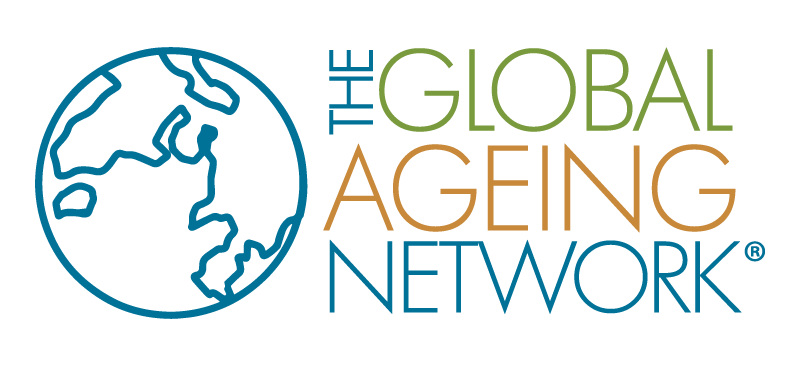By Kim Daly Nobbs & Tama Carey (Guest Post)
We’ve all heard the numbers. Across the globe, our population is graying. From 2010 to 2050, the global population of people over 65 will triple, from 524 million to 1.5 billion. Advancements in disease prevention and treatment resulting in a marketed increase in life expectency, combined with a declining birth rate mean that older adults over 65 now outnumber children under 5.
As organizations providing housing, care, and services to older adults, our need to be our best for those we serve is greater than ever. An increasing body of research shows that “being our best” in terms of creating and nurturing vibrant and functional organizational cultures is what also creates the best outcomes—financial and otherwise. In his book, The Advantage: Why Organizational Health Trumps Everything Else in Business, Patrick Lencioni, a U.S.-based author and consultant considered to be a seminal voice in leadership and organizational culture.
The concept of wellness as it relates to the people we serve has become increasingly sophisticated over the last decade. Many organizations use some multi-dimensional wellness model as a foundation for resident programming and as a guide for the way they conduct themselves with the people they service.
Organizations, too, have multiple dimensions of wellness. We’ve identified four major categories and a for organizational wellness, each containing a number of subcategories: Physical, Intellectual, Interpersonal, and Spiritual. This model provides a potential lens for addressing some of the issues that challenge so many ageing services organizations around the world.
As an example, the global nursing shortage continues to be a problem in many countries. The issue is partly that not enough new nurses and other caregivers are coming into the pool to address to burgeoning population of older adults. More immediately concerning, though, is the often high rate of turnover among the care staff that are already working in the field. The rigid, “command and control” cultures often typical of nursing don’t allow for the inspiration, opportunities for input, and flexibility that have been determined to be necessary to staff engagement and which are identified by the newest members of the workforce as especially important to their satisfaction.
The people we serve are also becoming more sophisticated and demanding, especially in the U.S. We have gone from a generation of older adults who were grateful for whatever was given to those who are clear on what they want and need and are willing to do what it takes to get it.
These factors and many more require a higher level of organizational awareness and continued development of and different expectations for, our leadership. Cognitive intelligence and expertise is important in our leaders, but it is in no way sufficient to meet the challenges global ageing housing, care and service providers will face now and into the future. The importance of our field continues to grow and, along with it, the need for change in our traditional models and modes of providing services. Agility is key, and it starts with an intentionality around continually assessing and creating systems to support organizational wellness.
Join Kim Daly Nobbs and Tama Carey in Montreux, Switzerland this September for their session entitled “How Organizational Health Drives Competitive Advantage”. Participants will explore best practices of healthy organizations, learn how to assess the health of their own organizations and discover ways in which making organizational wellness a key priority impacts overall success. Visit the conference website to register for this workshop and more!
About the Authors

Kim Daly Nobbs
Kim Daly Nobbs is the founder of Prajna Partners LLC, a consulting firm helping clients achieve greater brand/ culture alignment by focusing on strategic planning and leadership development. Throughout her more than 25-year career in senior living, Kim has been instrumental—in both her executive leadership positions and as a consultant—in creating organizational development initiatives to support mission and vision. Kim has been a frequent speaker at regional, national and international senior living conferences and currently serves as adjunct faculty at York College of Pennsylvania, where she teaches the strategic planning, marketing and public relations segment of NHA certification course. She is a certified Cultural Transformation consultant through the Barrett Values Centre, an international organization designed to help leaders measure and manage the cultures of their organizations.

Tama M. Carey
Joining Presby’s Inspired Life in November 2014, Tama M. Carey brings more than three decades of experience to her role as Chief Operating Officer. As Executive Vice President and Chief Operating Officer, Tama provides leadership and direction in the planning, development and operations of all of Presby’s Inspired Life 35 communities, as well as on the team that designs and delivers the strategic vision for Presby’s Inspired Life. Throughout her career, Tama has served in many capacities in the senior living field, including director of nursing, nursing home administrator and more recently in a role that supported home care, the development of a Medicare-licensed home health agency and Longwood at Home, a CCRC (continuing care retirement community) “without walls.” Currently, Tama is a coach for the LeadingAge Leadership Academy, a leadership development program offered by LeadingAge.
You need to login in order to like this post: click here
